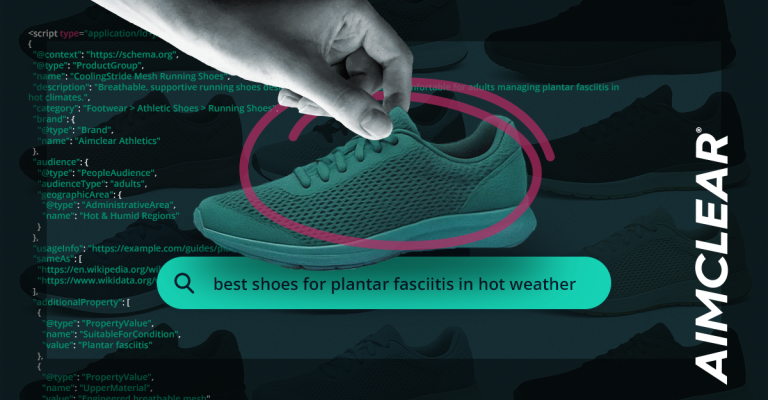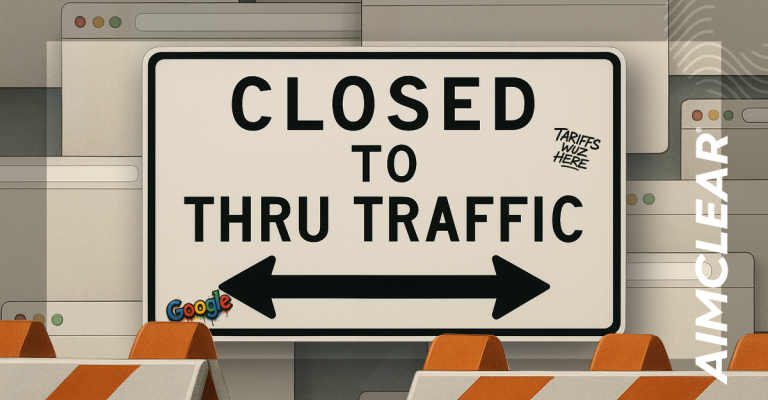As with many facets of technology, when it comes to SEO, the times they are (always) a-changin’. What was once advised by mostly technical means, search engine optimization has evolved to be noticeably impacted by more social elements, for example, blogs. Generating fresh content and comprehensive feed syndication are killer ways to help enhance your site’s overall SEO efforts, but never forget– “feeds” can be composed of so much more than simply blogs.
Sally Falkow, President, PRESSfeed, Lee Odden, SES Advisory Board & CEO, TopRank Online Marketing and moderator Craig Macdonald, Senior Vice President and Chief Marketing Officer, Covario sought to wrap up Day 1 of #SESSF by feeding us tasty tips for optimizing blogs, but also opening our minds to think outside the blog and leverage other types of valuable, keyword-rich content to serve customers.
First up is Lee, ready to spill his Recipe for Blog SEO Success. (Note: cute analogy, but not so cute for a starving blogger at the end of a long day.)
While there is surely a structured list of SEO tips you can follow for content optimization, try to emulate the great chefs of the world: do they follow recipes down to the “T” every time? Nope, not really. There’s room for creativity. Lee advises we follow the guide he’s about to dish out, but customize it in accordance with our own situations.
Blog SEO Prep
- Audience: Who’s coming to dinner? Who is your audience? As you plan your content, know who it is you are writing for.
- Keywords: What does your audience like to eat? Incorporate keyword queries that reflect your content. To know what works, you must do KW research.
- Content: What do you have in the kitchen? What are you writing about that’s topical? What problems are you solving for your readers?
- Blog CMS: Should we use the good china? Are you using Blogspot? WordPress? Custom CMS?
- Links & Social: Who can the guests invite? Are you implementing social share buttons? Cross-channel promotion attracts traffic and inbound links.
Tip: Match your editorial plan with keywords. Create different editorial plans for your search keywords, which advise blog content, and your social keywords, which advise social content.
Basic Blog SEO Tips
- Title tag vs. on-page title– do these tags have the opportunity to be different? WordPress has a plug-in that will allow you to create one title for search engines and one title for people.
- Implement keywords in the post URL (slug).
- Create keyword-rich categories.
- Thread keywords in copy, but use synonyms. Don’t be redundant in your verbiage.
- Incorporate anchor text links to older posts.
- Minimize duplicate content.
- Encourage inbound links.
Flow of activity: socialize – personalize –> grow networks –> promote
Cycle of Social & SEO
- Create and promote optimized assets.
- You promote content, it gets noticed, it gets shared, you grow awareness.
- This increases exposure, attracts more subscribers, fans, friends, followers and links.
- This contributes to increased search engine visibility.
- Now you can mine all of this data for content you create and optimize for future consumers.
Blog Content SEO & Logistics
- Identify & train blog contributors on SEO (titles, body copy, linking out & internally)
- Create keyword & engagement guidelines
- Make content promotion part of the publishing process
- Provide feedback: search & social
Blogs can be very social things. You can syndicate automatically to Facebook, Twitter, etc. You can (and should) comment on other blogs, link out to other blogs, run surveys or polls as a way to engage people, respond to your own comments… these are all social activities. It’s not just about publishing your own content. You have to look at being social off the blog. Propagate the message of the blog off the blog so people can link back to you and boost your search visibility.
Your Goal: Socialize and be useful. Syndicate your content without duplicating it. Map it out, plan it out, time it, and execute!
The Benefits: Content sharing, direct traffic, social syndication, inbound links, build trust & authority, create and engage the community.
Cool tools:
- Keywords- Google Keyword Tool, SEMrush
- On-page Blog SEO – Scribe (automated)
- Comment Management- disqus, ECHO
- Link Tracking – Majestic SEO
- Social Media Monitoring – Trackur, Techrigy, Radian 6
- Social Management – Hootsuite, MediaFunnel
- Social Search – 48ers.com, SocialMention.com
- Engagement – PostRank, BackType
And wrapping up this adorable analogy, Lee’s Perfect Blog SEO Recipe:
- 1/2 cup audience focused keywords
- 1 well-optimized blog CMS (WordPress)
- 2 cups content & editorial schedule
- Stir – linkable content w/ promotion
- Shake- grow & engage social network
- Bake – ongoing keyword & content refinement through web & social analytics
Sally was up next with her Content Strategy for 2010. She began by citing the Impact of Real-Time Web acccording to readwrite.com: “The web isn’t about pages anymore. It’s about streams, feeds & syndication.” With all the social that we’re in now, the way people are into the real-time web, the way search engines have changed – your content strategy has to change, too.
Sally also cited Matt Cutts and the new SEO practices for a Google Caffeine world: “Sustainable organic growth requires a commitment to unique and valuable content creation on a regular basis and the wherewithal to deliver it effectively.” In fact, Caffeine has been motivated by the social web and things going real-time. Search engines are constantly looking at all of the content put out there, and they’re nearly able to digest, index, and serve it up real-time. Blog posts are now being indexed in seconds. This is huge.
Moving Beyond the Blog
There’s got to be some system you’re feeding content through– that system may well be a blog. But the time has come to think about things over and a blog. Sally says you absolutely must blog. But there are other things you can (and should!) be doing, too.
- Tap into the real-time web.
- Make your content available in feeds.
- Make it easy to share and post to social sites.
There’s a reason why you put certain content on a blog– for sharing thought leadership, generating leads, etc. You blog in a certain, more personal voice, which is just one thing that makes it an appealing form of content. But don’t get stuck in thinking that a feed means a blog. Interestingly enough, Google’s definition of a blog is simply “a webpage with a feed.” There are so many other ways you can get all the value that you get out of a blog but with other types of content – just make sure it’s optimized.
SEO advice from Matt Cutts
- Create a blog and post content.
- Know the search terms your audience uses.
- Write good meta tags.
- Spotlight your search terms.
- Syndicate your content.
- Make sure you consistently generate fresh content.
- Work to get “citations” (an instance of someone mentioning you– this is not necessarily a live link) in the social web.
- Get relevant sites to link to you.
Link Building in 2010
- Get creative, be innovative, think about what people want.
- If you link this with your social media strategy, it all comes down to listening to conversations.
- Look at trends, observe gaps, pounce when opportunity arises, know what you can deliver, know what content you have, what you can create.
- Put it in a feed, put it out there, make it interesting so people say “OMG that’s brilliant!” and want to pass it on, link to it.
Think outside of the blog! You could leverage:
- News content- every company has a story to tell! Think about whats going on in your industry, what’s going on with you.
- Articles and product info (“how to” is the second biggest search onYouTube)
- Updates & alerts
As Sally says, “You don’t have to wait for the world to fall down or some huge merger to happen- you can create news.”
Cold-Pitch vs. Natural Convo
Sally’s advice: don’t cold-pitch content. Ever. Syndicate content and watch who talks about it, watch who picks it up. Then, contact the blogger- simply reach out to them. Thank them for sharing your content. This opens the door to a natural conversation. Start with great content that will spark a conversation based on the right KWs. This will help you all the way around – from SEO to social.
Distribute & Aggregate
It’s important to distribute your content and just as important to archive it on your own website. This way, when people come to you first, without finding you from social media or content feeds, they’ll see the same goods on your site – links to your Twitter profile, YouTube channnel, Facebook page, etc.
So what’s the ROI of content feeds?
- Get links
- Attract bloggers
- Feed content to social web = citations
- Boost organic SEO
- It stands to note that within 6 months, feeds often become top drivers of traffic to sites
Sally wraps up by reinforcing that you absolutely must blog– but look at what else you can do, what other interesting content you have that you can put in feeds.









